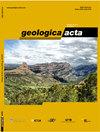Alt Palància地区(东伊比利亚链)中上三叠统地层与构造:多学科方法
IF 2
4区 地球科学
Q2 GEOLOGY
引用次数: 8
摘要
本研究提供了伊比利亚链东部中-上三叠统及其变形的新资料,该地区新生代收缩构造破坏了这种地中海型三叠纪岩石。研究了上Palancia地区的3个Muschelkalk演替单元。本区Muschelkalk下部和上部主要由两类亚单元组成,一类为碳酸盐岩亚单元,另一类为碳酸盐岩-泥灰岩交替亚单元。在Muschelkalk中部的蒸发岩单元和Keuper的蒸发岩单元之间观察到的明显的相似性,阻碍了它们在野外的明确区分。综合地质填图、地层测井、孢粉测年和石膏同位素分析结果表明:①在Espina-Espada断裂两侧的SW - NE样带上,出现了构造样式、相和沉积厚度的变化,为该主要构造的伸展活动提供了证据;ii)孢粉学资料表明,Rot相和Muschelkalk下、中单元属于安尼期,Muschelkalk上单元属于拉底期;iii)石膏δ 34 SCDT和δ 18 OSMOW值可作为区分Muschelkalk (δ 34 S: 15.6 ~ 17.8‰)和Keuper (δ 34 S: 14 ~ 15.5‰)单元的有效指标;iv)同位素特征也有助于识别两种蒸发岩相因构造并置而构成的泥质-泥质石膏质露头。这些结果证实了整个上帕兰西亚和东北向其他地区的地中海型三叠纪岩石。这种多学科的方法为研究伊比利亚三叠纪盆地和其他地质领域提供了一种强有力的方法,在这些地质领域,碳酸盐岩-蒸发岩的演替受到构造作用的严重破坏。本文章由计算机程序翻译,如有差异,请以英文原文为准。
Middle-Upper Triassic stratigraphy and structure in the Alt Palància region (eastern Iberian Chain): A multidisciplinary approach
The present study provides new data of the Middle-Upper Triassic successions and their deformation in the eastern Iberian Chain, where contractional tectonics during the Cenozoic disrupted this Mediterranean type of Triassic rocks. The succession, divided into three Muschelkalk units, was studied in the Alt Palancia area. In this area, both the lower and upper Muschelkalk consist of two main types of sub-units, those made up of carbonate and those of carbonate-marl alternation. The marked similarity observed between the evaporite units of the middle Muschelkalk and the Keuper humpers their unambiguous discrimination in the field. The integration of geological mapping, stratigraphic logging, palynological dating and gypsum isotope analysis carried out provided that: i) a change in the structural style, facies, and depositional thickness occurs across a SW to NE transect at both sides of the Espina-Espada Fault, providing evidence for the extensional activity of this major structure; ii) palynological data assign Anisian age to the Rot facies and the lower and the middle Muschelkalk units, and Ladinian to the upper Muschelkalk unit; iii) the δ 34 SCDT and δ 18 OSMOW values of gypsum reveal as a useful proxy to discriminate between the middle Muschelkalk (δ 34 S: 15.6 to 17.8‰) and the Keuper (δ 34 S: 14 to 15.5‰) units; and iv) the isotopic signature also helps to identify clayey-marly gypsiferous outcrops made up of the two evaporite facies due to tectonic juxtaposition. These results confirm the Mediterranean type of Triassic rocks for the entire Alt Palancia and other areas to the NE. This multidisciplinary approach reveals as a robust methodology to study Triassic basins in Iberia and to other geological domains where the carbonate-evaporite successions have been greatly disrupted by tectonism.
求助全文
通过发布文献求助,成功后即可免费获取论文全文。
去求助
来源期刊

Geologica Acta
地学-地质学
CiteScore
2.50
自引率
6.70%
发文量
13
审稿时长
>12 weeks
期刊介绍:
- Relevant conceptual developments in any area of the Earth Sciences.
- Studies presenting regional synthesis.
- Thematic issues or monographic volumes presenting the results from one or more research groups.
- Short papers reflecting interesting results or works in progress.
- Contributions and results from Research Projects, Workshops, Symposiums, Congresses and any relevant scientific activity related to Earth Sciences.
- Geologica Acta aims to stimulate rapid diffusion of results and efficient exchange of ideas between the widespread communities of Earth Science researchers (with special emphasis on Latinamerica, the Caribbean, Europe, the Mediterranean
 求助内容:
求助内容: 应助结果提醒方式:
应助结果提醒方式:


